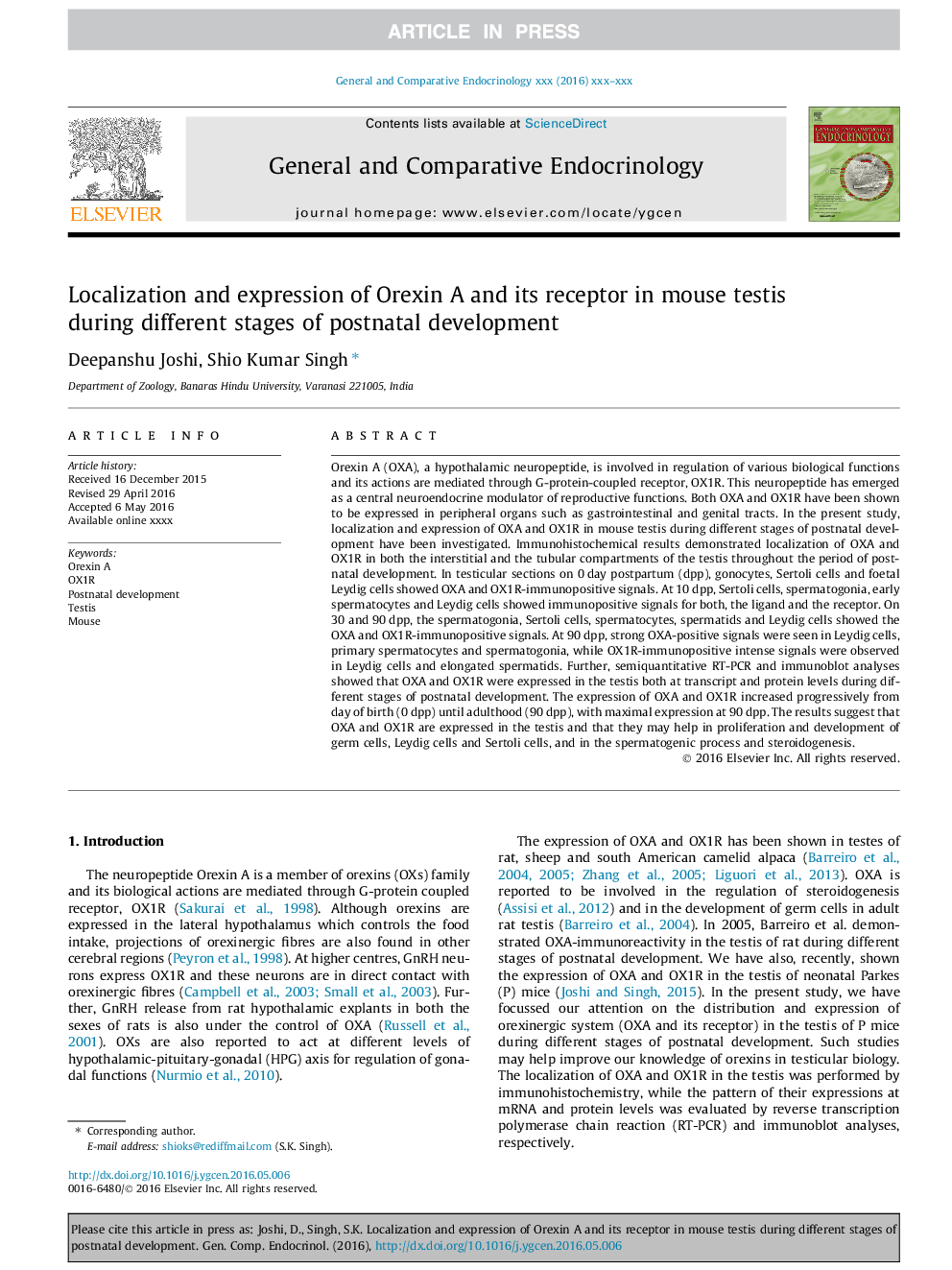| کد مقاله | کد نشریه | سال انتشار | مقاله انگلیسی | نسخه تمام متن |
|---|---|---|---|---|
| 5587655 | 1568866 | 2017 | 7 صفحه PDF | دانلود رایگان |
عنوان انگلیسی مقاله ISI
Localization and expression of Orexin A and its receptor in mouse testis during different stages of postnatal development
دانلود مقاله + سفارش ترجمه
دانلود مقاله ISI انگلیسی
رایگان برای ایرانیان
کلمات کلیدی
موضوعات مرتبط
علوم زیستی و بیوفناوری
بیوشیمی، ژنتیک و زیست شناسی مولکولی
علوم غدد
پیش نمایش صفحه اول مقاله

چکیده انگلیسی
Orexin A (OXA), a hypothalamic neuropeptide, is involved in regulation of various biological functions and its actions are mediated through G-protein-coupled receptor, OX1R. This neuropeptide has emerged as a central neuroendocrine modulator of reproductive functions. Both OXA and OX1R have been shown to be expressed in peripheral organs such as gastrointestinal and genital tracts. In the present study, localization and expression of OXA and OX1R in mouse testis during different stages of postnatal development have been investigated. Immunohistochemical results demonstrated localization of OXA and OX1R in both the interstitial and the tubular compartments of the testis throughout the period of postnatal development. In testicular sections on 0Â day postpartum (dpp), gonocytes, Sertoli cells and foetal Leydig cells showed OXA and OX1R-immunopositive signals. At 10Â dpp, Sertoli cells, spermatogonia, early spermatocytes and Leydig cells showed immunopositive signals for both, the ligand and the receptor. On 30 and 90Â dpp, the spermatogonia, Sertoli cells, spermatocytes, spermatids and Leydig cells showed the OXA and OX1R-immunopositive signals. At 90Â dpp, strong OXA-positive signals were seen in Leydig cells, primary spermatocytes and spermatogonia, while OX1R-immunopositive intense signals were observed in Leydig cells and elongated spermatids. Further, semiquantitative RT-PCR and immunoblot analyses showed that OXA and OX1R were expressed in the testis both at transcript and protein levels during different stages of postnatal development. The expression of OXA and OX1R increased progressively from day of birth (0Â dpp) until adulthood (90Â dpp), with maximal expression at 90 dpp. The results suggest that OXA and OX1R are expressed in the testis and that they may help in proliferation and development of germ cells, Leydig cells and Sertoli cells, and in the spermatogenic process and steroidogenesis.
ناشر
Database: Elsevier - ScienceDirect (ساینس دایرکت)
Journal: General and Comparative Endocrinology - Volume 241, 15 January 2017, Pages 50-56
Journal: General and Comparative Endocrinology - Volume 241, 15 January 2017, Pages 50-56
نویسندگان
Deepanshu Joshi, Shio Kumar Singh,